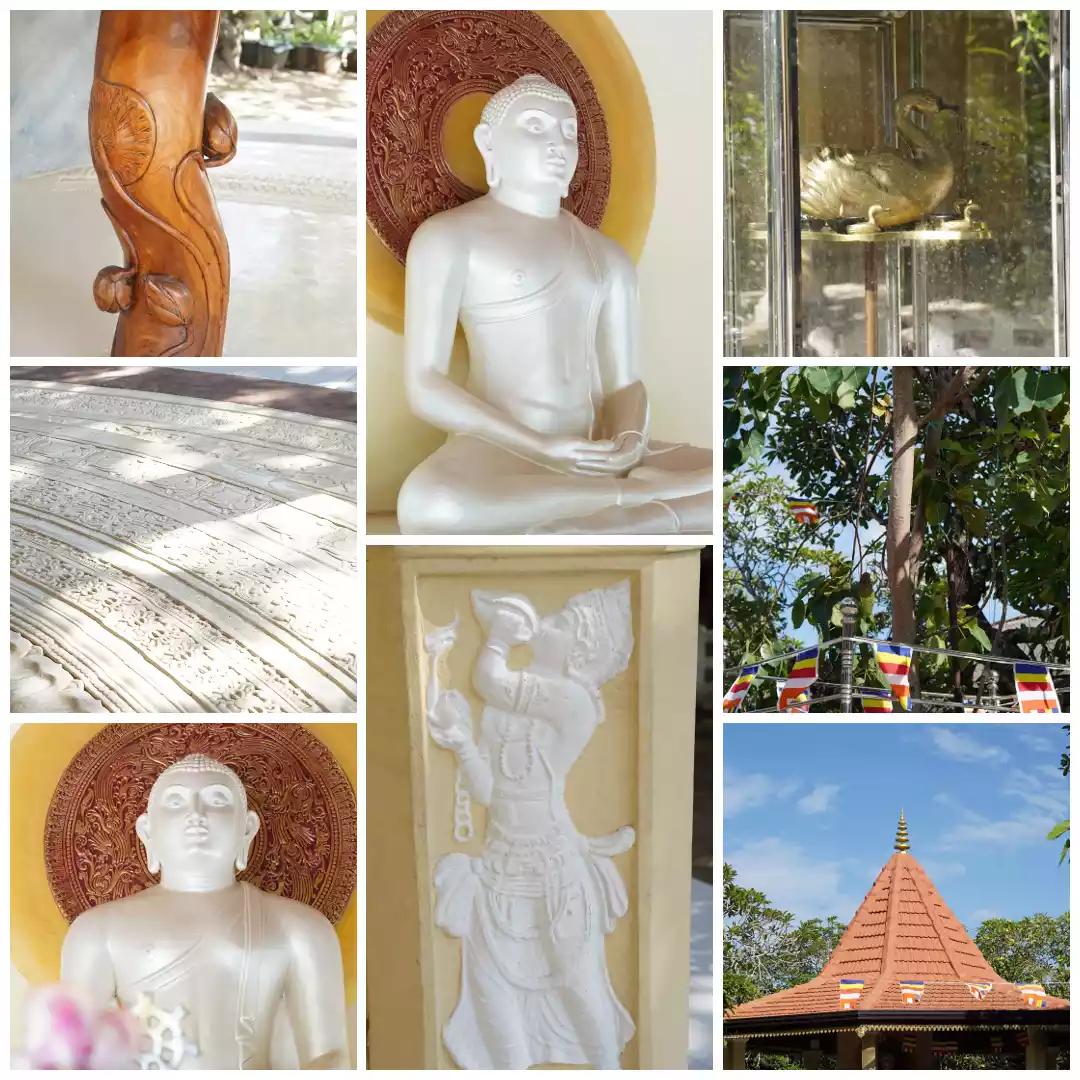Written by: Mr. Tissa Gunawardena (the sculptor of the shrine)
This shrine is a genuinely exceptional creation and therefore I will have to explain
every individual item and the relevance of each and every one of these to Buddhism. First I will
start with the pinnacle of the shrine which symbolizes the five precepts(Pancha Seela), and the roof
is octagonal which stands on eight pillars and this leaves eight entrances which symbolizes the
Eight Noble Paths. The idea of eleminating the walls and keeping one entrance which is the normal
architectural pattern of shrines in Sri Lanka, reveal the idea that people of all walks of life
irrespective whether rich or poor can reach the Blessed One.
The pillars are decorated with new forms based on the traditional patterns. The prominent sculpture
on the pillars is the figure of a Devatha(a celestial figure) holding an oil lamp in the right hand
and blowing a conch held by the left hand(Dakshinawratha Haka). The conch is blown at auspicious
moments, requesting the devotees to come from the four corners to worship the Blessed One. "Aradana
Gala" is the name given to the sculpture.
The floor of the shrine consist of three tiers. The first tier compromises a thirty feet moonstone,
the largest in Sri Lanka. The carving starting with "Ginisiluwa" and the symbolic idea is that the
world is burning with desire and craving. The 2nd decoration of the same tier is the elephant,
horse, lion and the bull. These animals are used as symbols; jathi, jara, wiyadi, marana. The 3rd
decoration is the Liyawela, Sansara Wela, never ending birth and death. The 2nd tier starts with the
swan, the symbolic bird which can separate milk from water. This is where the prilgrim should be
free himself/herself from all the evils and enter the pure zone. The 3rd tier is the most noble one
of the shrine. Here the lotus is sculptured to symbolize "Nirwana".
The altar of the shrine stands in the center of the 3rd tier - a well bloomed lotus. The stem of the
lotus is embraced by the three lotus leaves which symbolizes Thanha, Rathi, Ranga which obstruct the
other lotus buds from trying to bloom. These symbolize the attainment of Buddhahood. At the center
of the full bloomed lotus on the top of the altar is a carved "Dhamma Chakka", the symbol of
Buddhism. The devotees are indirectly forced to offer flowers to Dhamma. The statue of the Shrine
belong to the "Theravada" tradition which expresses the inner sublimation.



